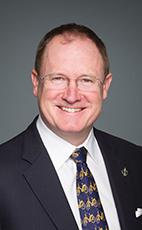Madam Speaker, with respect to the member for Hull—Aylmer's assertion that plans have stalled, I wish to assure this House that the government understands fully our responsibility to protect the health and well-being of all Canadians, including first nations living on reserve.
Given that the provision of health services to first nations people is a shared responsibility between the federal and provincial governments, Health Canada has worked closely with provincial governments and other partners to help ensure that first nations communities have access to the health services they need when they exhibit influenza-like symptoms.
We recognize that individuals with underlying medical conditions, such as cardiovascular disease, diabetes and other chronic illnesses, as well as pregnancy, may be at greater risk for complications from the influenza. Because first nations communities have a higher incidence of many of these conditions, first nations communities may see higher rates of complications from respiratory illnesses.
This fundamental consideration continues to guide Health Canada's work with its partners to address H1N1. Based on the pandemic plan that has been in place since 2006, this government has responded quickly and appropriately to H1N1 influenza. We have implemented the Canadian pandemic influenza plan for the health sector, including the specific activities which relate to pandemic planning for on reserve first nations as outlined in annex B of the plan.
At the community and regional levels, we have been actively planning for the fall-winter influenza season. Virtually all first nations communities have a pandemic plan in place. The vast majority of plans have been tested. Some remote and isolated first nations communities, as in other remote communities, face additional challenges, including the distance required to travel to hospitals for acute care, access to running water, and adequate housing. Most provinces have recognized these particular challenges and are looking at the pandemic guidelines from this perspective.
In preparing for and responding to wave one of the H1N1 pandemic, Health Canada sent medical supplies and equipment to all nursing stations in first nations communities, including those in Manitoba. These crucial supplies included items such as personal protective equipment for front line health workers and pain relief medication. We also prepositioned anti-viral medications in nursing stations for early treatment of influenza-like illnesses. Supplies and anti-virals continue to be replenished as needed as we combat wave two.
Health Canada supports first nations communities across Canada to help ensure their readiness to deal with the current pandemic. When we saw increased illness reported against northern Manitoba, the Government of Canada worked closely with first nations leadership, Manitoba Health and Healthy Living, the Public Health Agency of Canada, and regional health authorities to ensure a timely co-ordinated and integrated response.
In Manitoba, we worked with the province to establish human resource pools consisting of physicians, nurse practitioners and nurses to assist with the response in first nations communities. In anticipation of the vaccine approval that occurred on October 21, 2009, we shifted the primary focus of our planning and response from treatment to prevention.
Health Canada has now finalized preparations for mass vaccination of all on reserve first nations who want it. Vaccination-related activities include: providing training and additional health professionals to assist communities in vaccination once provinces supply the vaccine; procuring mass immunization supplies; and working with provinces, territories and other federal departments and agencies and first nations organizations to ensure consistent and culturally-appropriate information is available regarding the H1N1 vaccine.
As we move forward to address H1N1 on reserve, we do so in full collaboration with our partners. This includes the Department of Indian and Northern Affairs, as well as the Assembly of First Nations. On September 19, 2009, the department signed a communications protocol with National Chief Atleo of the Assembly of First Nations and the Minister of Indian Affairs and Northern Development.
This protocol formalizes our working relationship and reflects the deep commitment all three organizations have to combatting H1N1.

